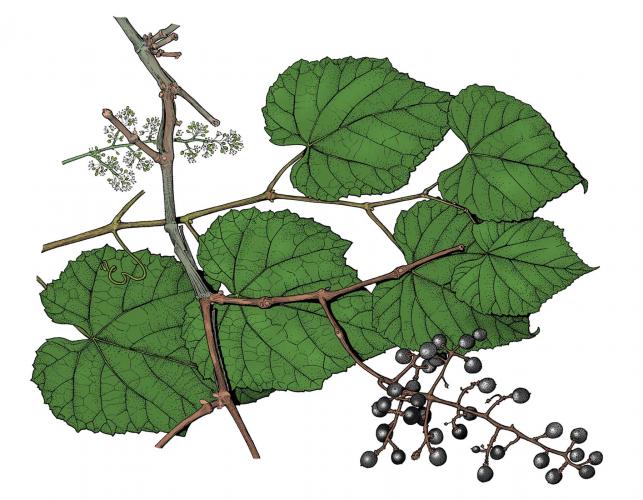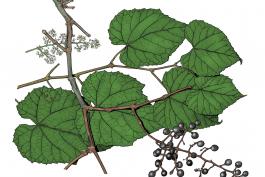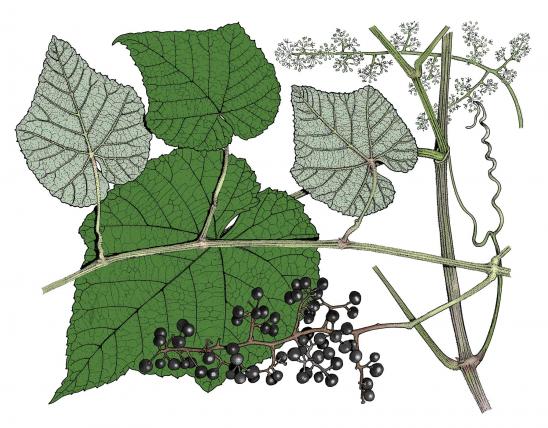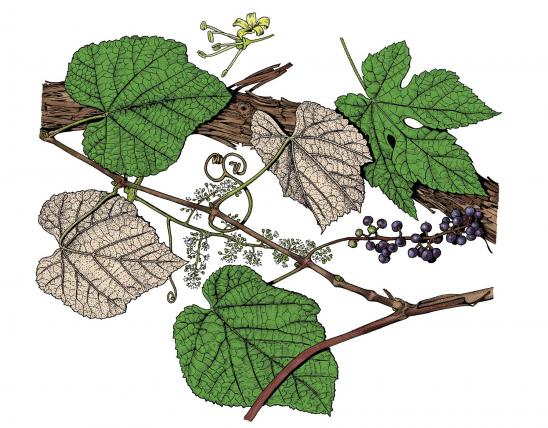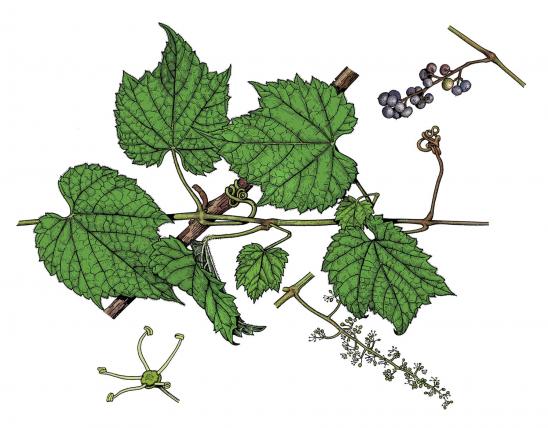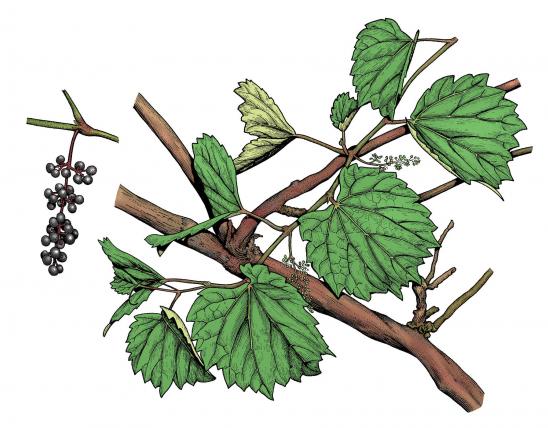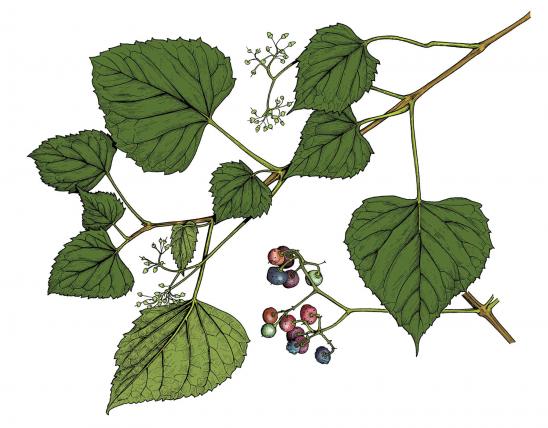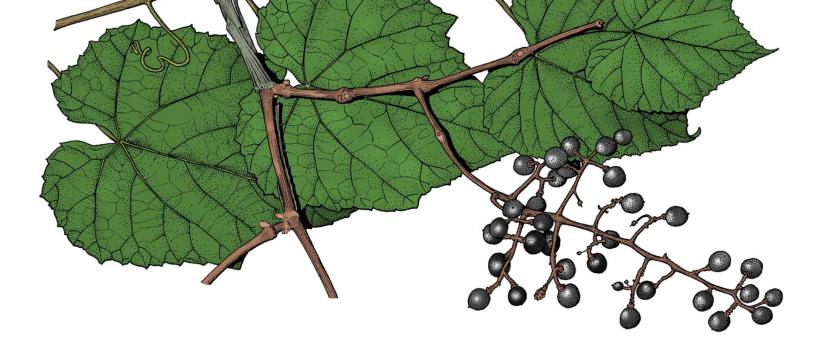
Frost grape is a vigorous vine climbing high by tendrils to 60 feet in length.
Leaves are alternate, simple, 4–6 inches long, 3–6 inches wide, heart-shaped to egg-shaped or round, base with a broad to narrow U-shaped sinus (cleft between two lobes) where the leaf stalk meets the blade; margins with large, prominent teeth, irregular; if lobed, the 2 side lobes short, shoulderlike; the leaves of flowering or fruiting branches not 3-lobed; upper surface dark green, smooth; lower surface paler, with short, straight hairs on the veins and small tufts in the vein axils.
Stems smooth, grayish green becoming reddish brown, finely ridged; tendrils up to 8 inches long, appearing opposite the leaves. Bark grayish brown, furrowed, shredding very little.
Flowering is in mid-May–June. Flowers are green, minute; male and female flowers in separate clusters on same plant; petals 5, dropping early. Clusters 3–5 inches long.
Fruit matures in September–October. Fruit are black, glossy, globe-shaped berries covered with a white waxy coating when ripe, about ¼ inch thick, thin-skinned, pulp juicy, turning sweet after frost, in drooping clusters up to 6 inches long. Seeds 2–4 per fruit.
Stems can reach 65 feet or more in length.
Scattered nearly throughout the state.
Habitat and Conservation
Occurs in bottomland forests, mesic upland forests, bases and ledges of bluffs, banks of streams and rivers, and edges of ponds and lakes; also roadsides and railroads. This species apparently endures cold better than any other grape species — but its ability to withstand severe summer heat and long drought is rather poor.
Human Connections
This vine was first cultivated in 1806. The hardy rootstock is used extensively in Europe for grafting favorite wine-producing varieties.
Many old-time Ozarkers used to feel that if it rains on the first day of June, it would be bad for the grape crop, whether wild or cultivated. One report maintained that if it rains on June 20, the grapes would fall right off the vines. Weather signs and portents are a large component of folklore studies.
The species name, vulpina, pertains to the fox, which is said to be fond of the fruit. (Aesop’s fable about the fox and the grapes naturally comes to mind.)
Many people gather the vines to used in wreaths and other crafts.
Ecosystem Connections
The fruit is eaten by many species of birds and mammals, including wood duck, catbird, cardinal, bobwhite, ruffed grouse, wild turkey, raccoon, red fox, striped skunk, and deer.
The foliage is browsed by deer, and the tendrils are eaten by wild turkey.
Several species of sphinx moths use wild grape species as larval food plants.
